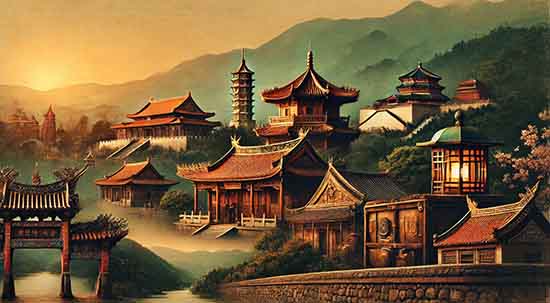A Look Through Time of Taiwan History
Taiwan is an island with a history covering thousands of years. The true story of Taiwan’s history is filled with resilience, culture, and change. From the earliest indigenous communities to the society it has become today, Taiwan’s history is colorful as its landscape. As someone who has lived through some of the island’s recent changes, I want to share my experiences with you. Let’s reply the moments shaping Taiwan into the beautiful place it is today.
The First Inhabitants
Long before foreign explorers arrived, Taiwan was already home to indigenous peoples. Evidence suggests the first settlers arrived around 5,000 to 6,000 years ago. These early communities were part of the Austronesian peoples, known for their skills in farming, fishing, and craftwork. Over the centuries, these groups evolved into distinct tribes, each with its own language, traditions, and cultural practices. Today, Taiwan officially recognizes 16 different indigenous tribes, and their heritage continues to play a key role in Taiwan’s identity. From festivals to traditional weaving and music, the spirit of these early inhabitants still lives on.

Encounters with Foreign Visitors
In the 16th century, Taiwan started to attract the attention of foreign explorers and traders. The Portuguese were some of the first Europeans to sail past the island, naming it “Ilha Formosa,” which means “beautiful island.” This name captured the imagination of many and became a symbol of Taiwan’s natural charm. Not long after, the Dutch and the Spanish established settlements on the island, bringing with them new trade opportunities and cultural influences. The Dutch set up their base in the south, building Fort Zeelandia, while the Spanish occupied parts of the northern coast. These settlements left a mark on Taiwan, shaping its early interactions with the wider world.
The Ming Loyalists and the Kingdom of Tungning
In the mid-17th century, Taiwan entered a new chapter in its history. Ming loyalist Koxinga arrived on the island in 1662, seeking refuge after the fall of the Ming Dynasty to the Qing. Koxinga defeated the Dutch forces, establishing the Kingdom of Tungning in Taiwan. This short-lived kingdom introduced Chinese culture and administrative systems to the island. Although the Kingdom of Tungning lasted only a few decades, it laid the foundations for the development of Taiwan as a place of cultural and economic growth.
Qing Dynasty Rule
Taiwan came under Qing Dynasty rule in the late 1600s. The Qing government began to encourage migration from mainland China, mainly from the Fujian and Guangdong provinces. This migration brought new customs, language, and agricultural practices to Taiwan. The island’s population grew rapidly, and new communities began to evolve. Despite being under Qing rule, Taiwan’s position as an island gave it a certain level of independence. The mix of local traditions, indigenous culture, and Chinese influences created a unique blend building Taiwan’s character.
The Period of Japanese Rule
In 1895, Taiwan underwent a major change when it was ceded to Japan after the First Sino-Japanese War. This marked the start of a fifty-year period of Japanese rule. The Japanese authorities made significant changes to Taiwan’s infrastructure, economy, and society. Roads, railways, and modern cities were developed, and new industries such as sugar and tea production excelled. The Japanese government also introduced education reforms, building schools and promoting public health. While this period brought modernization to the island, it also came with strict rule and cultural changes affecting the daily lives of many people. Despite these challenges, the legacy of Japanese rule can still be seen today in the island’s architecture, public transport systems, and even in local food.
The Return to Chinese Rule and the Post-War Era
Following Japan’s defeat in World War II, Taiwan was handed over to the Republic of China (ROC) in 1945. This was a time of great transition. As the island welcomed new governance, change is always hard to accept. However, just a few years later, the Chinese Civil War led to the retreat of the ROC government to Taiwan. Under the leadership of Chiang Kai-shek, Taiwan became the seat of the Republic of China. The island experienced a period of political tension and martial law, which lasted for several decades.
During this time, Taiwan underwent rapid economic growth. Known as the “Taiwan Miracle,” the economy transformed from an agricultural base to an industrial powerhouse. The government invested heavily in education, infrastructure, and technology. This influx of money and attended paved the way for Taiwan to become a leader in electronics and manufacturing. The hard work and resilience of our people during these years laid the foundation for the modern Taiwan we know today.
The Path to Democracy
In the late 20th century, Taiwan began to welcome a new era of political change. The lifting of martial law in 1987 marked the beginning of a path toward democracy. This shift brought greater freedom and new voices to the forefront. Taiwan held its first presidential election in 1996. This election allowed the people to choose their leaders in a democratic process. Since then, Taiwan has become known for its open society, where different ideas and cultures coexist. The development of a democratic system has been a source of pride for many, reflecting the spirit of resilience and progress.
Taiwan Today Is a Blend of Tradition and Modernity
Today, Taiwan stands as a place where history, culture, and innovation come together. The island is known for its busy densely populated cities, stunning natural landscapes, and cultural heritage. Temples stand alongside skyscrapers, and traditional markets share space with high-tech industries. The influence of different periods in Taiwan’s history can be seen everywhere, from the architecture in old towns to the food on the streets. This blend of the past and the present gives Taiwan its unique charm.
While Taiwan’s history includes periods of struggle and change, the warmth and strength of its people shine through. This island has received a wide range of influences. These influences are the backbone of a powerful story of progress and hope. The traditions of indigenous tribes, the cultural legacy of Chinese settlers, the mark of Japanese rule, and the growth of democracy have all shaped Taiwan into what it is today. We are proud to say Taiwan is a place full of life, culture, and endless possibilities.
Preserving and Celebrating the Past
As we walk through the streets of Taipei, explore the old neighborhoods of Tainan, or hike through the forests of Alishan, you will feel the echoes of Taiwan’s history. Temples, museums, and historic sites tell the stories of those who came before. Festivals and traditional arts continue to keep the island’s cultural heritage alive. Taiwan has a deep respect for its past, and it welcomes others to learn about and share in the experience.
Taiwan’s history is a living narrative continuing to grow and evolve. Each moment has shaped the character of the island and its people. It is a history remembered, celebrated, and cherished. This spirit of embracing the past while looking forward is what makes Taiwan so special.
As i reflect on my brief first hand look into Taiwan’s history, I hope you feel the warmth, the pride, and the incredible journey of this island. Taiwan’s story is one of change, resilience, and a deep connection to the land and people. It is a story worth knowing and celebrating.
